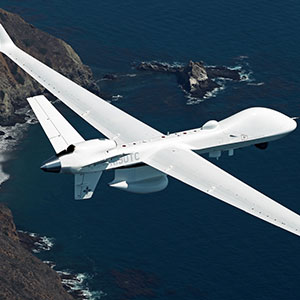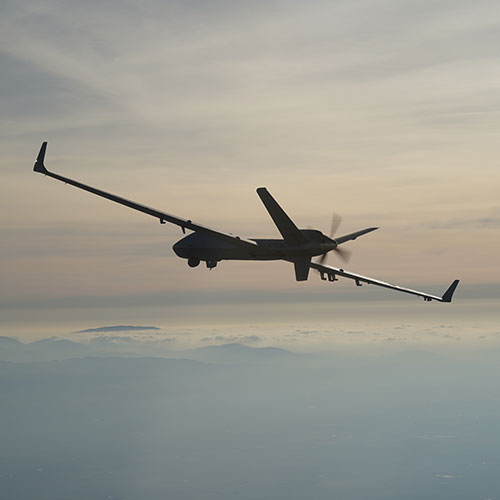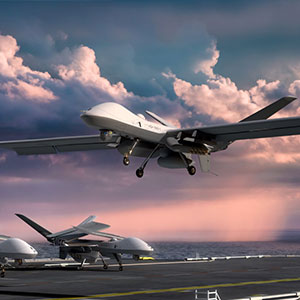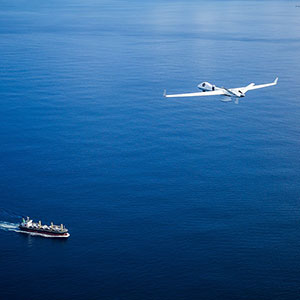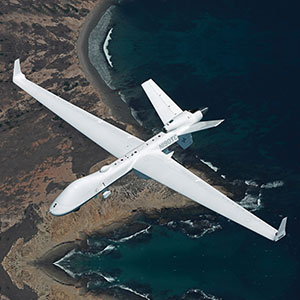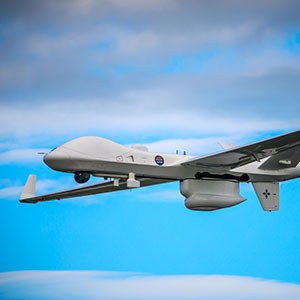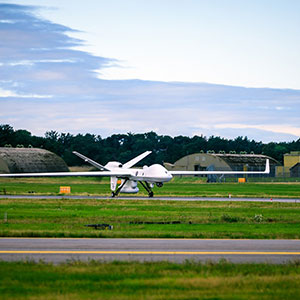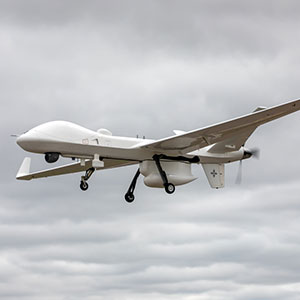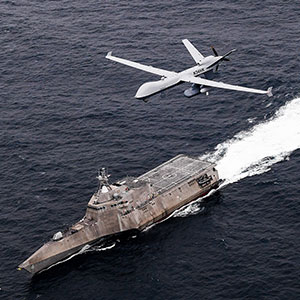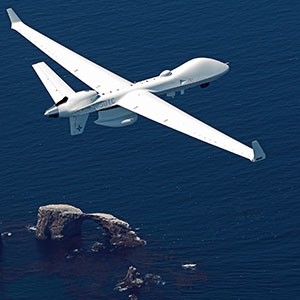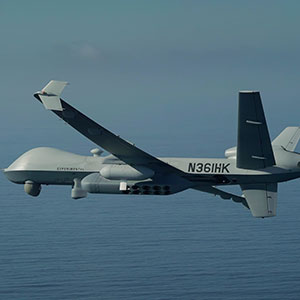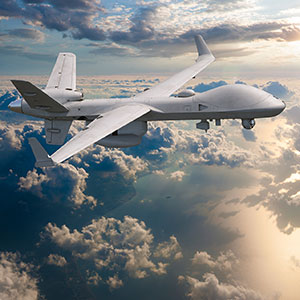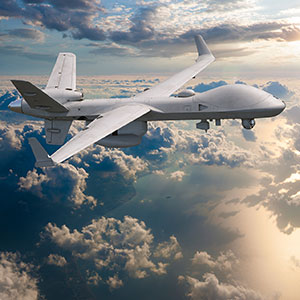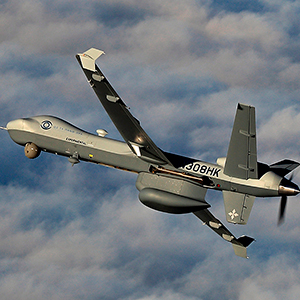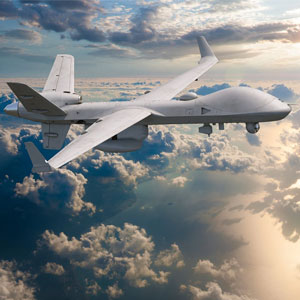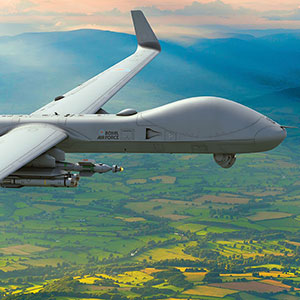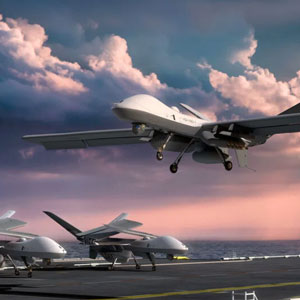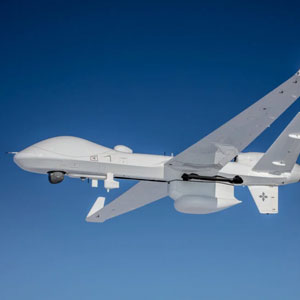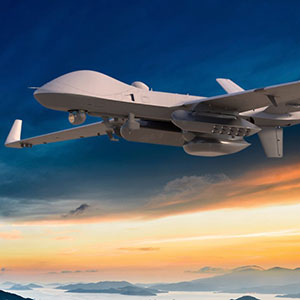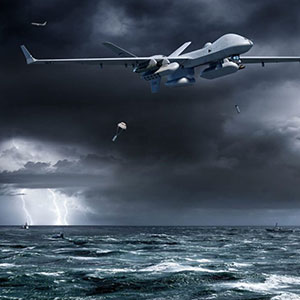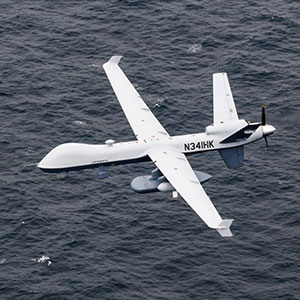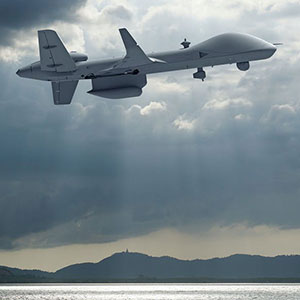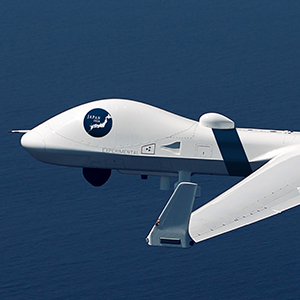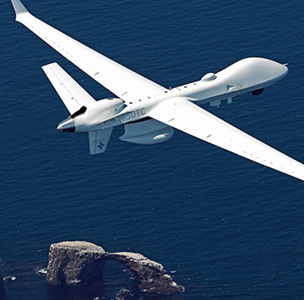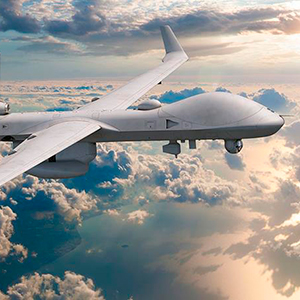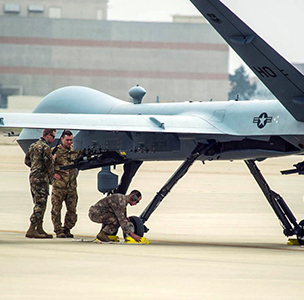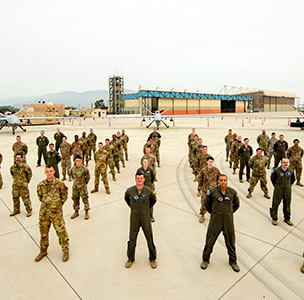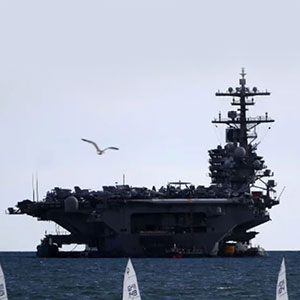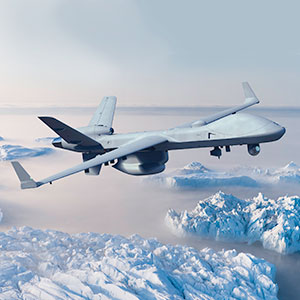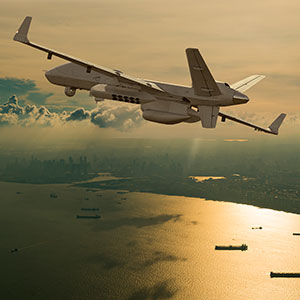MQ-9B SeaGuardian®: Redefining Maritime Domain Operations
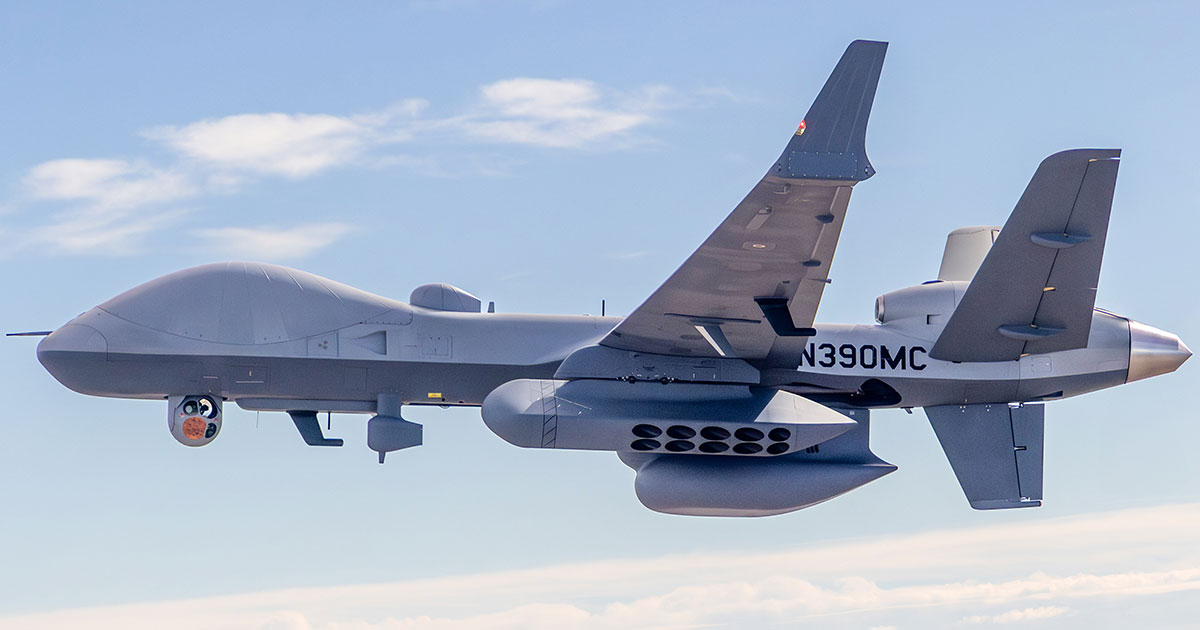
The MQ-9B SeaGuardian® unmanned aircraft system (UAS) is tailor-made to support the U.S. Navy, Marine Corps, and their allies and partners around the world against peer or near-peer forces. As the most capable long-endurance aircraft of its kind, SeaGuardian is revolutionizing what’s possible for anti-surface, anti-submarine, and electronic warfare operations in support of carrier strike groups, surface action groups, amphibious ready groups, and international forces.
SeaGuardian springs from the world’s most proven family of remotely piloted aircraft — the more than 1,000 Predator-series multi-mission aircraft that have logged over 8 million operational hours, most of which were in combat. While it stands on the foundation of all those predecessors and years of experience, the MQ-9B SeaGuardian is a wholly new aircraft that represents the next generation of UAS.
SeaGuardian is larger, can fly longer, cover greater distances, carry more payloads, and has better capabilities than anything else in its class. On its own, it’s the world’s most sophisticated medium-altitude, long-endurance unmanned aircraft. When meshed with Navy-Marine Corps commands and their allies, it serves as a force multiplier of uncommon value.
Airspace Integration
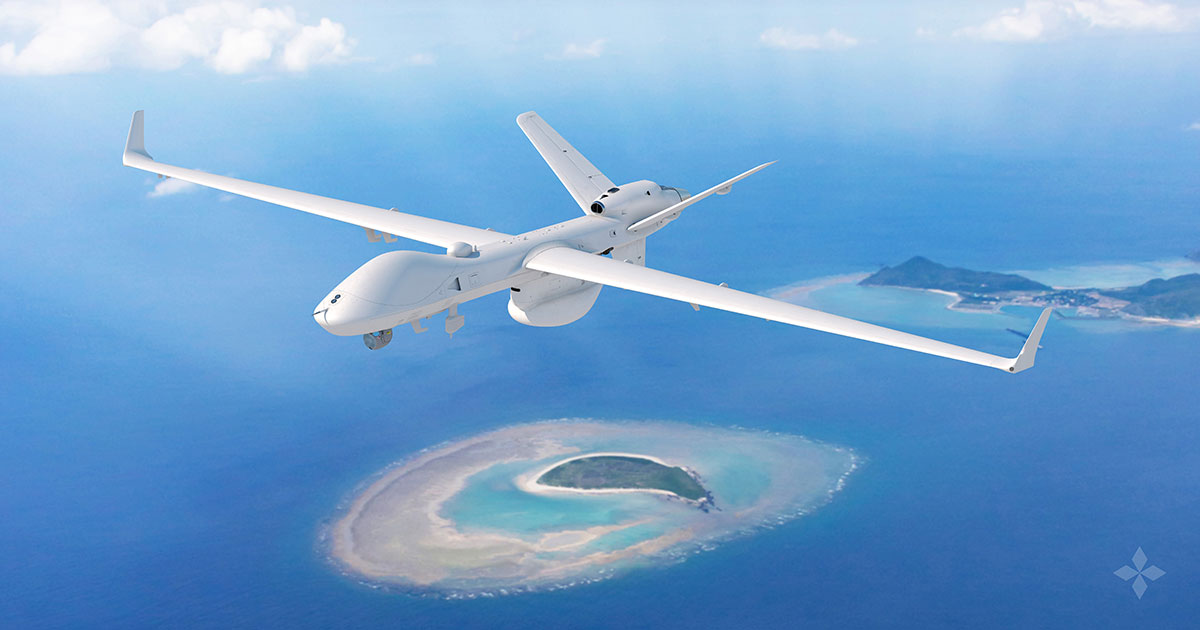
SeaGuardian is distinguished from its predecessors by being the first unmanned aircraft in its class to integrate with normal air traffic, enabling airborne surveillance anywhere in the maritime domain. SeaGuardian’s Detect and Avoid System means that the aircraft not only meets rigorous NATO and military type certification standards, but that it is also certifiable by civil aviation authorities. These authorities do not need to set aside special corridors of airspace or require an escort aircraft for SeaGuardian to take off and transit between segregated and non-segregated airspace like earlier-model aircraft once did. Operators can treat the SeaGuardian the same way they do a standard human-crewed aircraft and just file a flight plan and fly. Learn more about how GA-ASI is driving airspace integration here.
All-Weather Performance

When it comes to challenging weather at sea, SeaGuardian is designed to withstand some of the world’s harshest conditions. It has an upgraded fatigue- and damage-tolerant airframe with a service life of 40,000 hours. SeaGuardian is also provisioned with state-of-the-art lightning protection and a de-ice/anti-ice system. In January and February 2023, GA-ASI proved MQ-9B’s cold weather capabilities in Grand Forks, North Dakota. Learn more about MQ-9B’s cold weather capabilities here.
Mission Payload Versatility
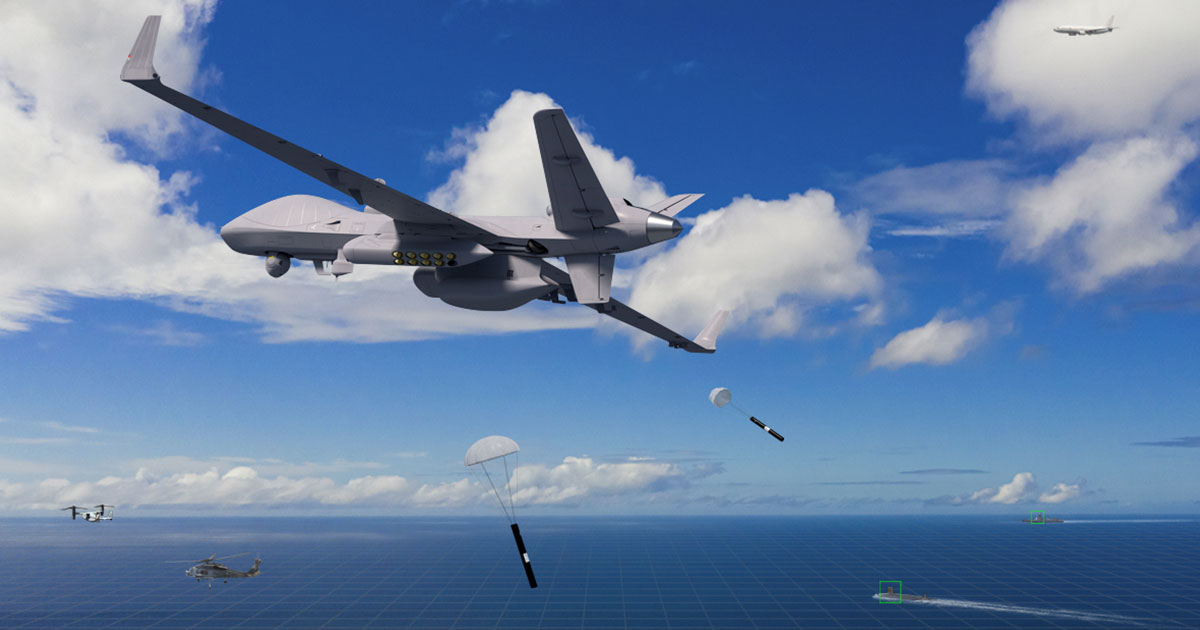
SeaGuardian can support naval missions with its onboard suite of sensing and intelligence capabilities, enabling forces to see everything in the visual and infrared spectrum, including – with its onboard multi-mode radar – through clouds, fog, mist, or smoke, and hear across the radio frequency spectrum. It can also take on board any number of special payloads to support mission needs. A 360-degree surface search radar, for example, provides wide and detailed surface domain awareness. Communications payloads let the aircraft serve as a major networking node. And MQ-9B SeaGuardian is the only platform of its kind that can carry, release, and monitor sonobuoys — indeed, the platform has revolutionized unmanned anti-submarine warfare.
SeaGuardian has been sponsored by the U.S. Navy for some of its most complex and challenging integrated exercises – including a major anti-submarine warfare exercise in May 2023 in which the aircraft, flown by its crew from a ground control station and operated via satellite, joined with U.S. Navy helicopter squadrons to search for submarines in a range off the coast of Southern California. Helicopter crews flew out from San Diego, dropped their sonobuoys, and then SeaGuardian took over monitoring them. Shortly thereafter, its sensors detected a simulated submarine. This meant other helicopters could deploy to the scene armed with precise data about the target’s location and course and then attack. Learn more about SeaGuardian’s growing track record in the maritime domain.
Detect & Deter

SeaGuardian can help extend the eyes and ears of a strike group, verifying that choke points or other critical passages ahead of the main force are clear of hostile units. The aircraft can extend the sensing and reach of a large human-crewed maritime patrol aircraft, giving commanders tremendous flexibility in how they posture their air units. And by leveraging GA-ASI’s Optix+ geospatial intelligence software, units can task SeaGuardian and collate its sensor data with real-time commercial traffic information to rapidly detect non-compliant vessels at sea.
In demonstrations and exercises over the past 3+ years, SeaGuardian has repeatedly proven how well it can integrate with U.S. Navy and international forces. With a maximum endurance of roughly 30 hours in some configurations, the aircraft can supply a strike group or other command with intelligence of a richness and quantity that nothing else can, including overhead assets. MQ-9B can detect and identify a vessel of interest and then preserve custody of that target for hours. With other aircraft working in teams, navies or coast guard officials can watch a key waterway or a target of interest for as long as they want.
Cost-Effective Solution
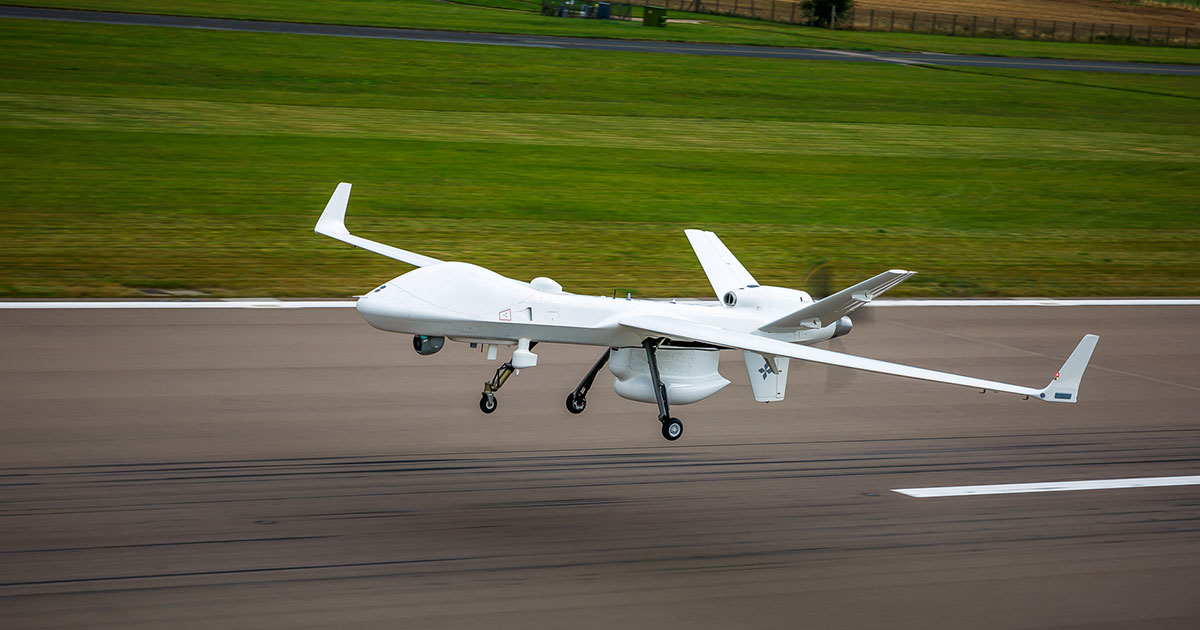
SeaGuardian is a huge cost saver as well. This advanced aircraft can provide roughly 80 percent of the capability of a large human-flown maritime patrol aircraft at about 14 percent of its cost per hour. That makes it much more economical for navies to send out SeaGuardians to clear big volumes of air or sea and then, if anything of interest is discovered, vector in a human-crewed aircraft, saving time, cost, and wear that might otherwise have been expended.
MQ-9B SeaGuardian is the ideal complement to manned aircraft and costs 86% less to operate per hour…
SeaGuardian
± $5,000/Hour
Manned Maritime Patrol Aircraft
± $35,000/Hour
More time on station for a higher probability of detection (Pd)
± 25 Hours
± 10 Hours
Burns 90% less fuel than similarly configured manned ISR aircraft and requires 50% fewer people to operate
± 200 lb/Hour
± 5,000 lb/Hour
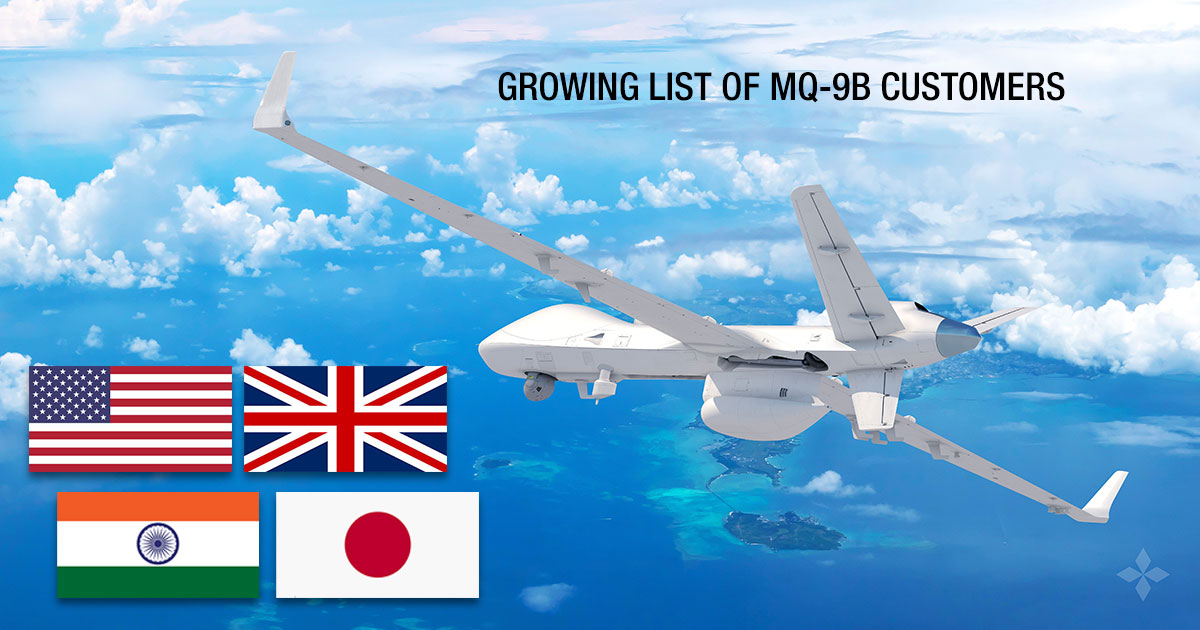
Press Releases
-
GA-ASI SeaGuardian Supporting RIMPAC 2022
July 27, 2022 -
GA-ASI Grows Mojave Line With New MQ-9B STOL Package
May 10, 2022 -
GA-ASI Selected for Japan Coast Guard RPAS Project
April 06, 2022 -
GA-ASI to Feature Full Size SeaGuardian at DIMDEX
March 17, 2022 -
GA-ASI Completes European Maritime Demos
Oct 12, 2021 -
GA-ASI SeaGuardian Flies from UK to the Netherlands
Sep 02, 2021 -
GA-ASI SeaGuardian Takes Flight
Sep 14, 2020 -
GA-ASI Integrates SAGE 750 ESM onto SeaGuardian
Sep 9, 2020
News Articles
-
UK Protector leads MQ-9B development in Europe
Breaking Defense -
MQ-9B: An Ideal Solution for MENA and Global Security
Breaking Defense -
Unmanned Aerial Vehicle Sea Guardian Operates with Naval Assets
United States Navy -
Could Protector augment Poseidon maritime patrol aircraft?
UK Defence Journal -
With an Eye on China, Reaper Drones Train for Maritime War
Air Force Magazine -
We're ready: Exercise Agile Reaper sends Holloman MQ-9s to California
Alamogordo Daily News
